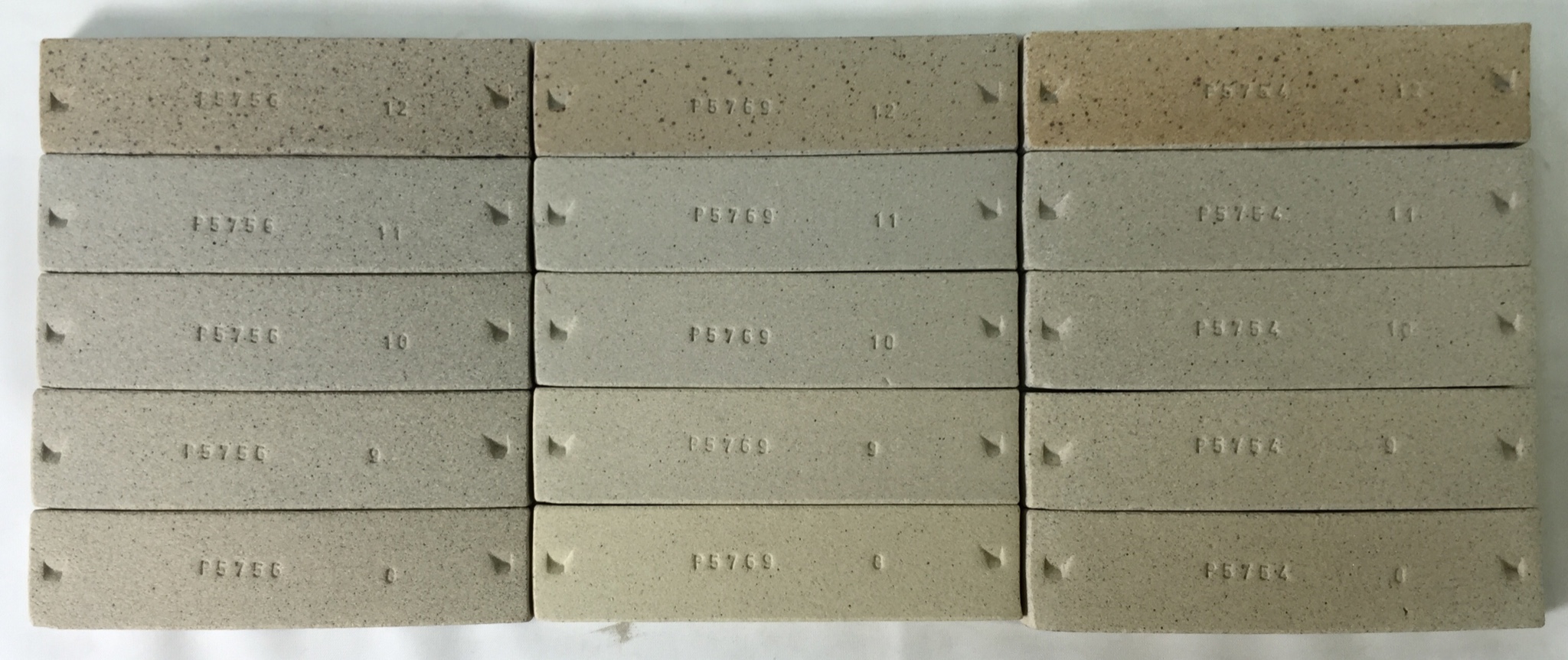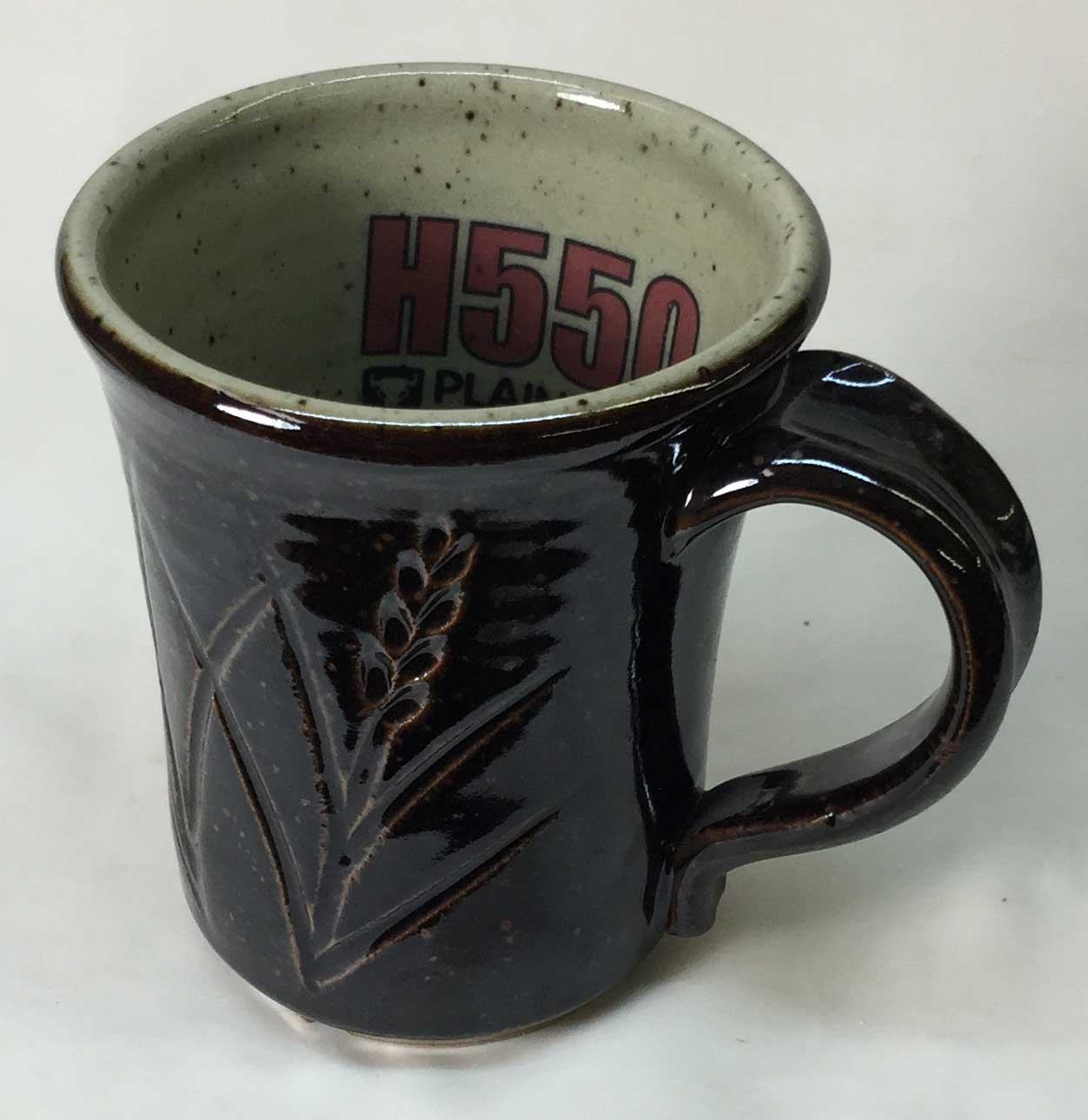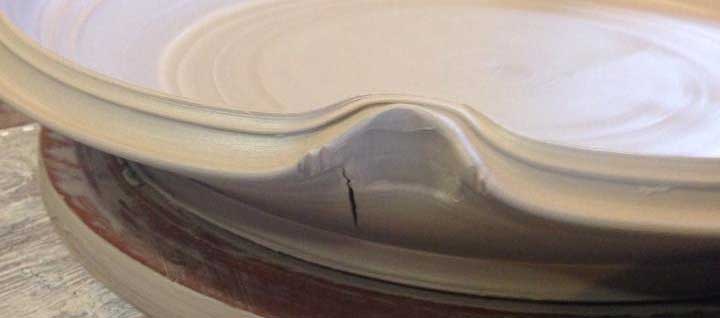H550
Description
High temperature, slightly sandy, plastic, semi-vitreous, grey-buff burning, general purpose, native body for reduction and oxidation fired functional stoneware.
For many years H550 has been a standard among Plainsman customers for cone 10 reduction functional ware. We maintain the porosity at about 2% for cone 10R. See H450 for a smoother, lighter burning body.
News
We are pleased to report that as of April 2023 a new improved H550 will be available. A change in one of its materials made the adjustment necessary and also provided an opportunity to rethink the recipe. The change involves removing all kaolinized sand and adding a new type of ball clay. We have been able to maintain the fired color and amount of speckle while increasing the plasticity and making the texture much smoother.
Process Properties
H550 has a fairly plastic but slightly sandy texture and generates plenty of slip during throwing. H550 has a good distribution of particle sizes in the entire plus 200 mesh range (it draws from the illite, ball clay and kaolinite mineral families) to give relatively fast drying and high green strength. However, since H550 has a fairly high dry shrinkage, care and attention in drying are still necessary in making larger pieces, especially flat plates and shallow bowls. If you want a smoother, more plastic body, please use H450 instead.
Firing

These fired test bars (left to to right) compare H431, H550 and H435 at cone 10R (top) and cone 11, 10, 9 and 8 oxidation.
H550 is fairly vitreous at cone 10R (the most mature of our bodies made completely from our materials). H450 is slightly less mature and a little more stable in the kiln, it is also smoother, cleaner and lighter burning. In oxidation H550 burns to a much lighter grey buff than it does in reduction. It generally fires solid grey in reduction kilns (cone 10R is past its transition point from reduction light-buff to grey buff).
Since H550 contains some free silica, normal care is required when heating and cooling it through quartz inversion temperatures, especially if ware is being refired.
Glazing
Since H550 contains more than 70% SiO2 you can expect it to accept most typical cone 10 glazes without crazing them (glazes which craze on porcelain bodies will often fit well on H550).
Glaze Recipes
Commercial brush-on glazes: They may or may not fit our clays (check for glaze fit using a BWIW test or similar). For brightly colored glazes (especially with layering) do a leach test (e.g. GLLE test). Consider using a transparent or white liner glaze for food surfaces.
Mixing your own glazes is practical (with our clear guidelines even beginners can make dipping glazes that go on silky smooth and evenly and dry in seconds). If you already do this using recipes from the web, be careful. High-feldspar glazes (having more than about 35%) often craze. Some recipes rely on high melt fluidity to encourage crystallization and variegation (often because of inadequate SiO2 and Al2O3 or containing Gerstley Borate or Frit), view these with suspicion for leaching and cutlery marking; test them well (also test the additionless versions). Be suspicious of any glaze not having good documentation.
Consider using our G1947U glossy or G2571A matte base recipes, just add colorants, opacifiers, variegators (you will find links to much more information and pictures about these). If you have a recipe that is troublesome, consider transplanting its opacifiers, colorants and variegators to these bases instead. http://ravenscrag.com and http://albertaslip.com also have many recipes that work well on porcelains.
Crazing: Functional ware must remain craze-free (crazing is unsanitary and drastically reduces ware strength). Even though ware may not be crazed out-of-the kiln it may do so with time. Do cycles of a boiling water:ice water immersions (BWIW test) on a piece to test glaze fit (by stressing it to bring out any crazing or shivering tendencies).
Thixotropy: If you want the best application properties for one-coat dipping, consider creating a thixotropic slurry. Thixotropic glazes are creamy because they have been thinned and then gelled by the addition of a flocculant.
For slip decoration and engobes be careful to match the fired shrinkage of the slip with the body. Where we do not recommend a specific engobe recipe, consider one based on the body itself. Add 2% VeeGum or Bentonite (the extra stickiness helps it adhere well to leather hard ware). Be careful about adding fluxes (e.g. frit), this increases fired shrinkage creating a mismatch with body that can cause flaking (and can compromise engobe opacity).
If you want to develop and mix your own glazes and engobes consider getting an account at insight-live.com. You can organize a methodical development program and adopt better methods of testing (e.g. melt fluidity, thermal stress, slip-fit tests).
Thermal Expansion
We do not supply thermal expansion values. If a chart is supplied here, please view it only as a way to compare one body with another. Please note that, although you may calculate the thermal expansion of a glaze, this cannot be done for clay bodies since they do not melt. The best way to fit glazes to clay bodies is by testing, evaluation, adjustment and retesting. For example, if a glaze crazes, adjust its recipe to bring the expansion down, fire a glazed piece and thermal stress it (using an IWCT test, 300F into ice-water). If it still crazes, repeat the process.
Physical Properties
Drying Shrinkage: 6.0-7.0% Water Content: 20.5-21.5% Drying Factor: C120 Dry Density: 2.0
Sieve Analysis (Tyler mesh):
+48: 0-0.3% 48-65: 1.5-2.5 65-100: 6.0-8.0 100-150: 3.0-5.0 150-200: 4.0-7.0 200-325: 7.0-9.0
Fired Shrinkage:
Cone 8: 4.0-5.0% Cone 10: 4.5-5.5 Cone 10R: 5.0-6.0
Fired Absorption:
Cone 8: 3.0-4.0% Cone 10: 2.0-3.0 Cone 10R: 1.0-2.0
Chemical Analysis
CaO 0.2 K2O 1.7 MgO 0.6 Na2O 0.1 TiO2 0.7 Al2O3 19.0 P2O5 0.0 SiO2 69.8 Fe2O3 1.6 MnO 0.0 LOI 6.4%
Gallery

Plainsman H550 mug fired at cone 10R. The liner glaze is G1947U transparent. Outside is 50:50 roast:raw Alberta Slip mix. Mug has been fired to 1500F in a decal firing, this has darkened the Alberta Slip tenmoku effect (to almost black).




